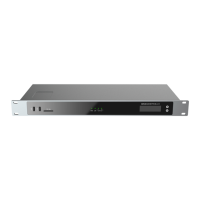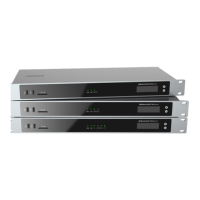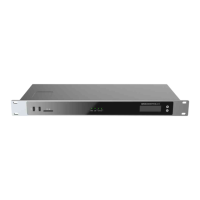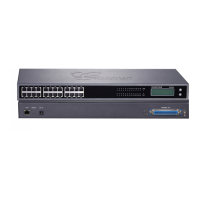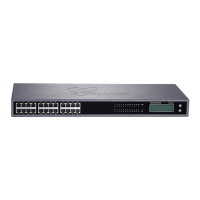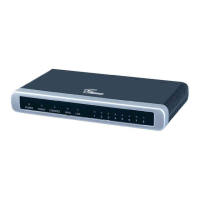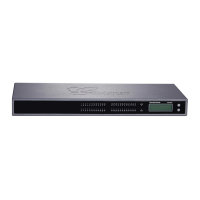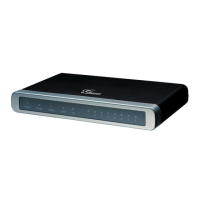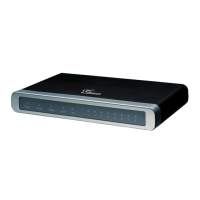Figure 60: General call Failure Tones
Jitter Buffer
A jitter buffer is used at the receiving equipment to store incoming RTP packets, re-align them in terms of timing and check they are in the correct
If some arrive slightly out of sequence then, provided it is large enough, the jitter buffer can put them back into the right sequence. However, for t
work the receiving device must delay the audio very slightly while it checks and reassembles the packet stream.
Below are the Jitter buffer Settings to control the size of the buffer and its implementation mode:
Enable Jitter
Buffer
Select to enable the jitter buffer on the sending side of the SIP channel. The default setting is “No”.
Jitter Buffer
Size
Configure the time (in ms) to buffer. This is the jitter buffer size used in the “Fixed” jitter buffer or used as the initial time for the
“adaptive” jitter buffer. The default setting is 100.
Implementati
on
Configure the jitter buffer implementation on the sending side of a SIP channel. The default setting is “Fixed”.
Fixed
The size is always equal to the value of “Max Jitter Buffer”.
Adaptive
The size is adjusted automatically and the maximum value equals the value of “Max Jitter Buffer”.
Max Jitter
Buffer
Configure the maximum time (in ms) to buffer for “Adaptive” jitter buffer implementation or used it as the jitter buffer size for “
jitter buffer implementation. The default setting is 100.
Table 44: Jitter Buffer Settings
Interface Settings
The GXW450X supports E1/T1/J1 which are physical connection technologies used in digital networks. T1 is the North American standard, J1 is use
Japan, whereas E1 is the European standard. GXW450X supports four signaling protocols: PRI_NET, PRI_CPE, MFC/R2, and SS7. PRI provides a vary
number of channels depending on the standards in the country of implementation (E1, T1, or J1); MFC/R2 is a signaling protocol heavily used ove
trunks; SS7 uses out-of-band signaling, which travels on a separate, dedicated channel rather than within the same channel as the telephone call,
providing more efficiency and higher security level when the telephone calls are set up.
The interface settings page allows the configuration of digital hardware parameters. For more details, refer to the [Digital Hardware Configurati
section.
GXW450X also allows the users to configure Tone Region by choosing their country to set the default tones for dial tone, busy tone, and ring ton
be sent. If not specified, the default setting is “The United States”.
MAINTENANCE
The Maintenance section lists different tools to help troubleshoot the issues that might be encountered while using the GXW450X alongside a set
options to manage users, control web GUI access, upgrade the firmware, backup the configuration, take ethernet and Digital traces …etc.
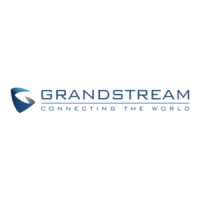
